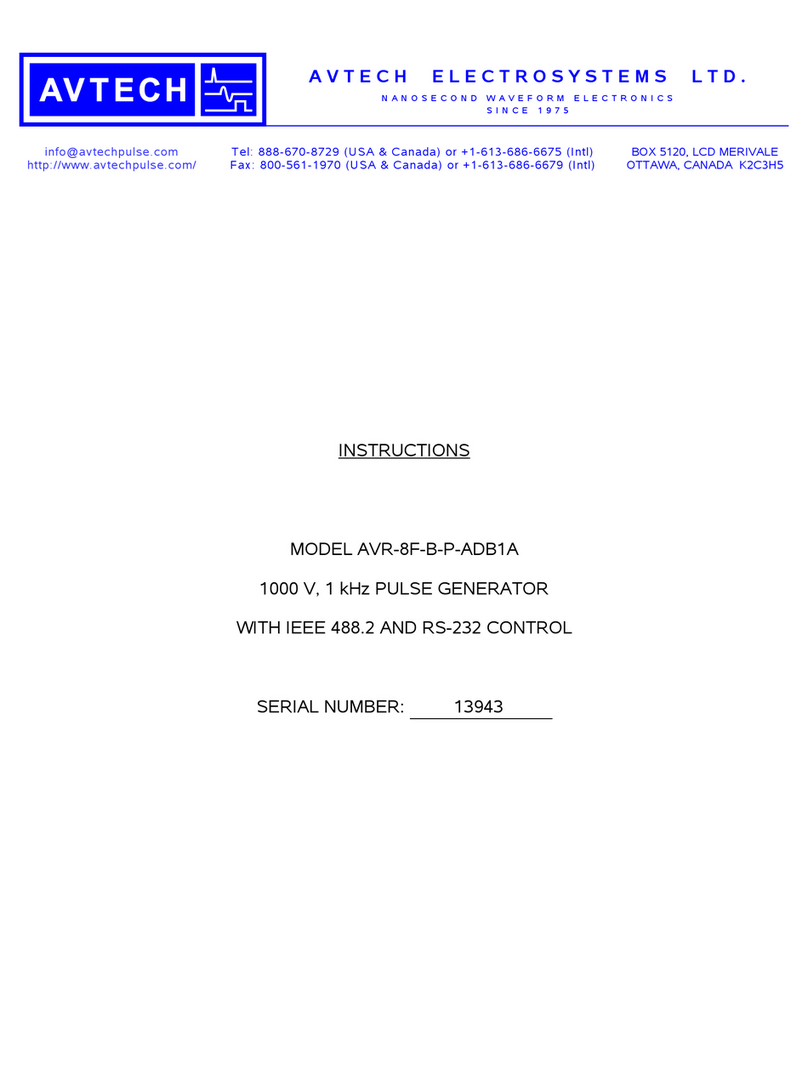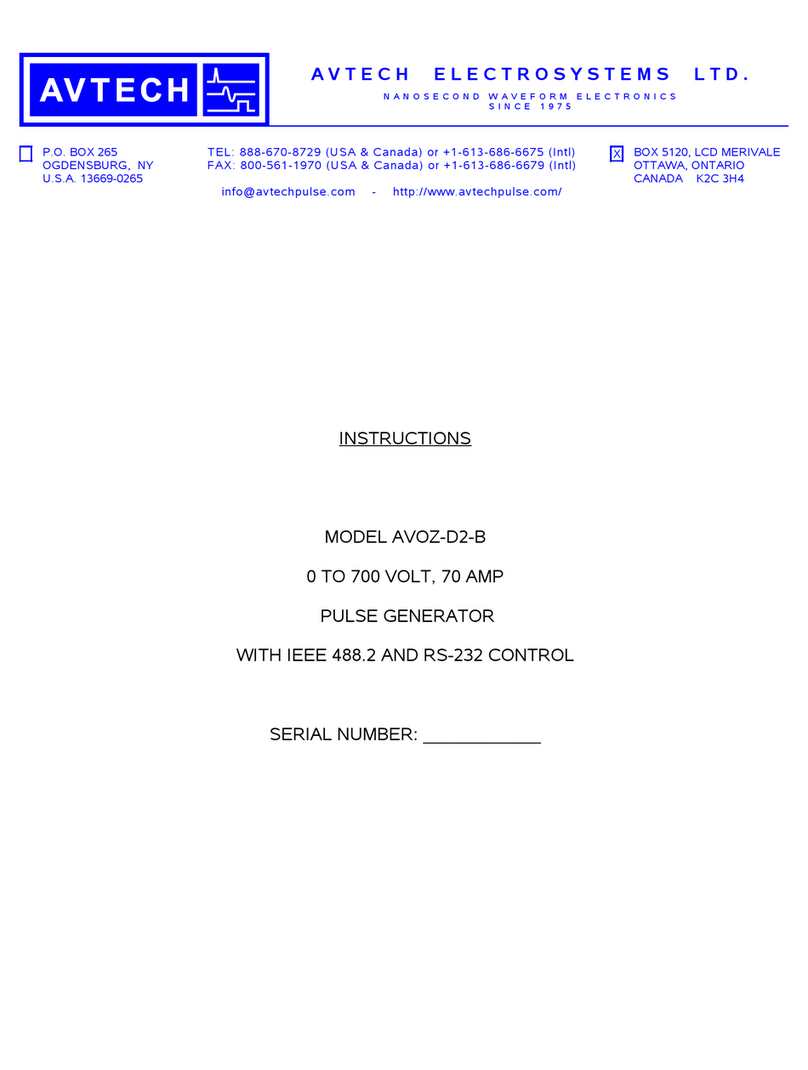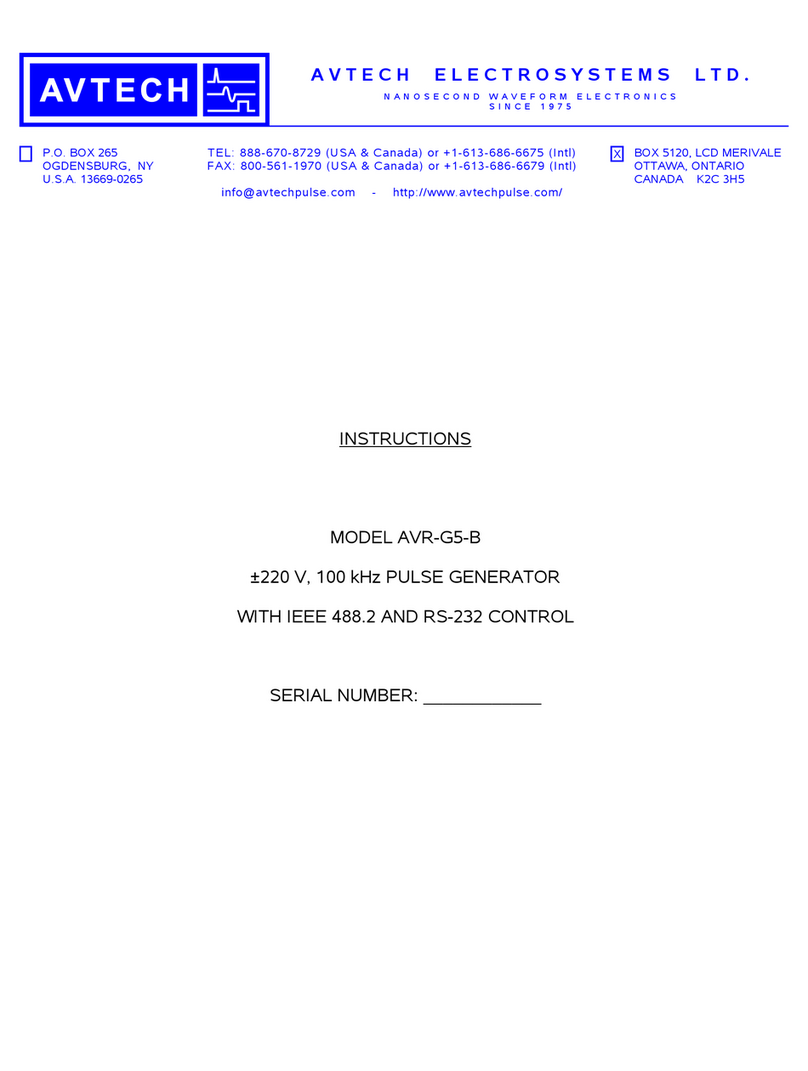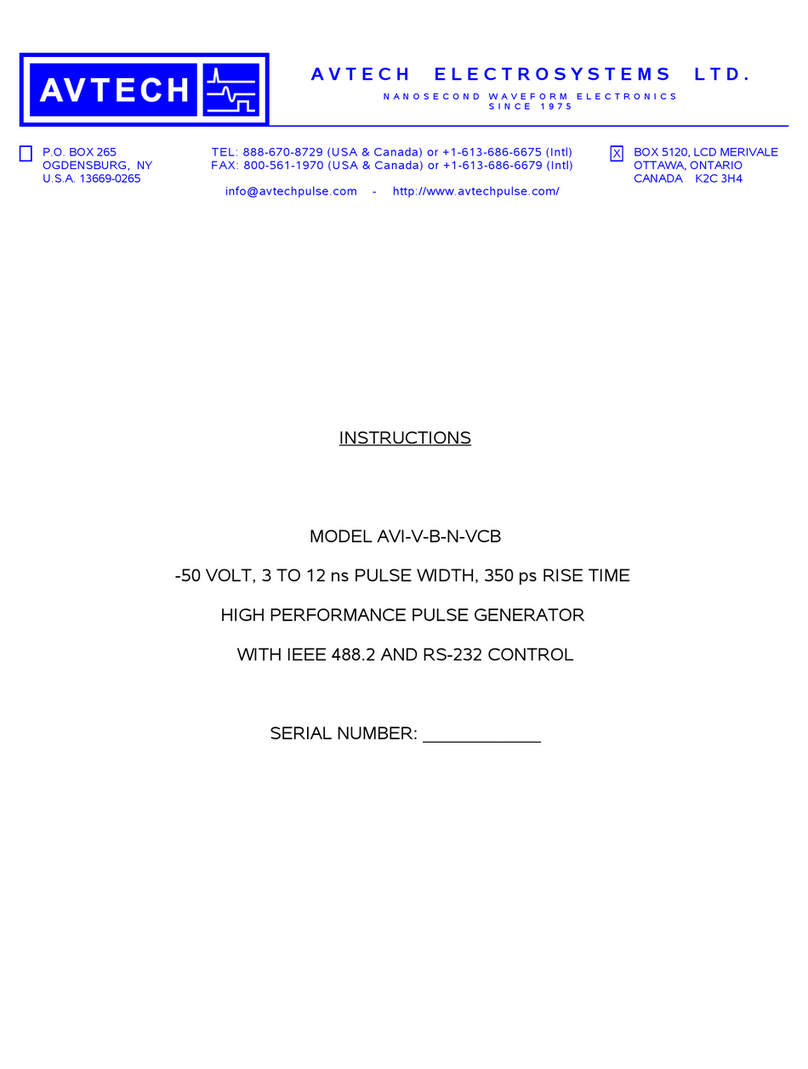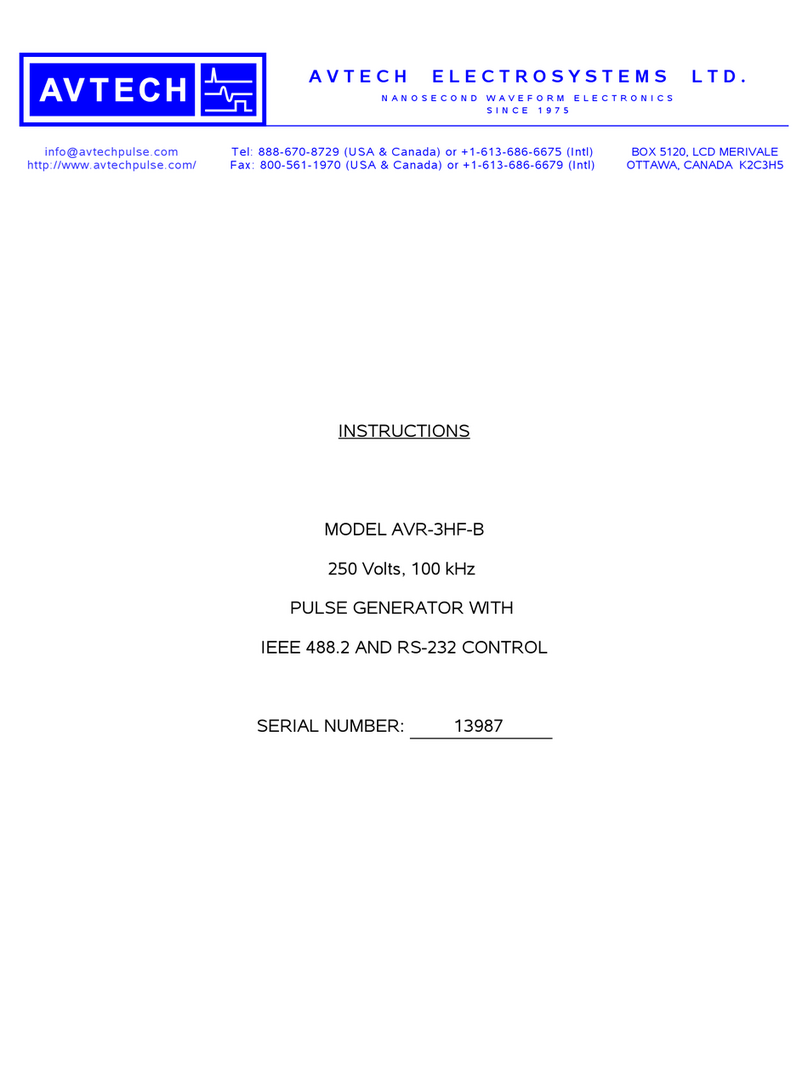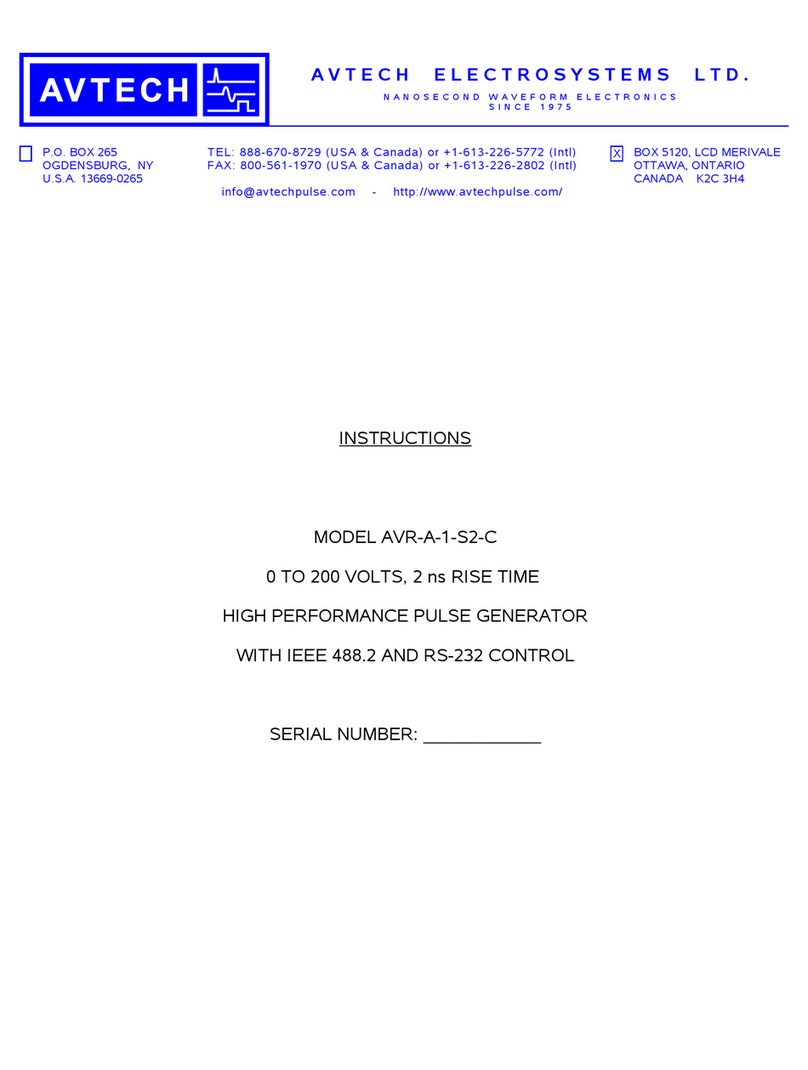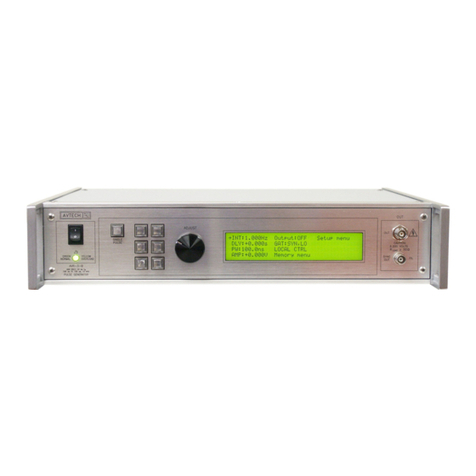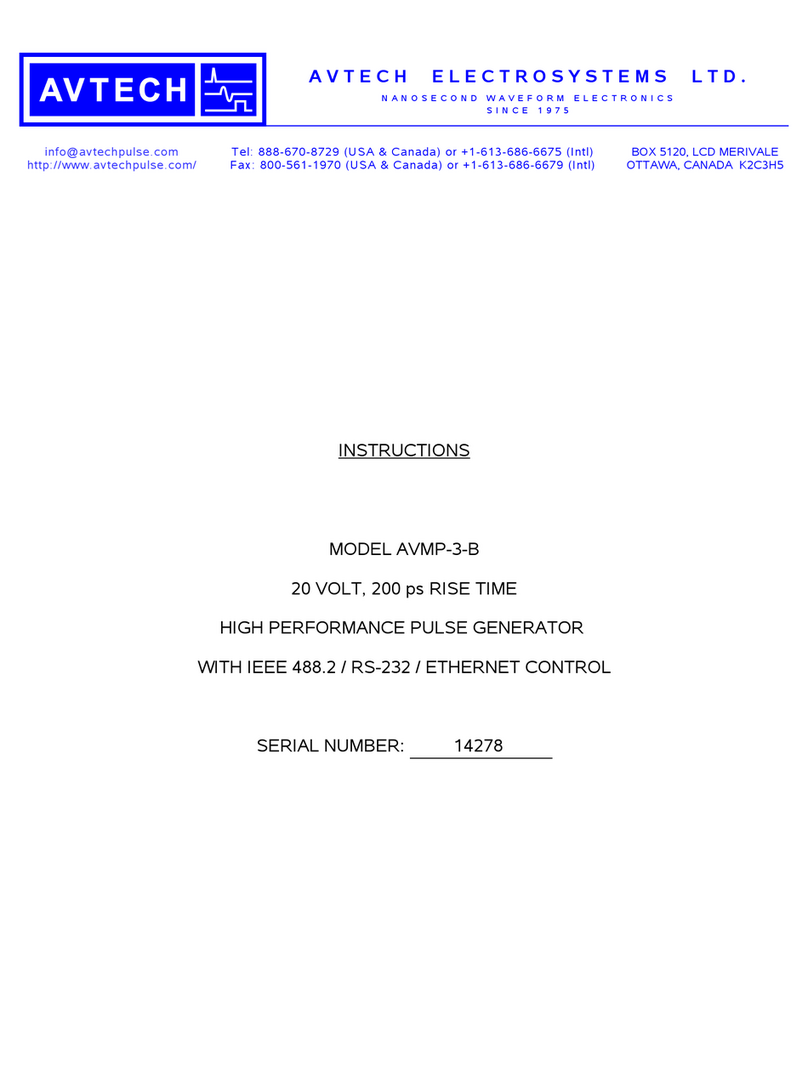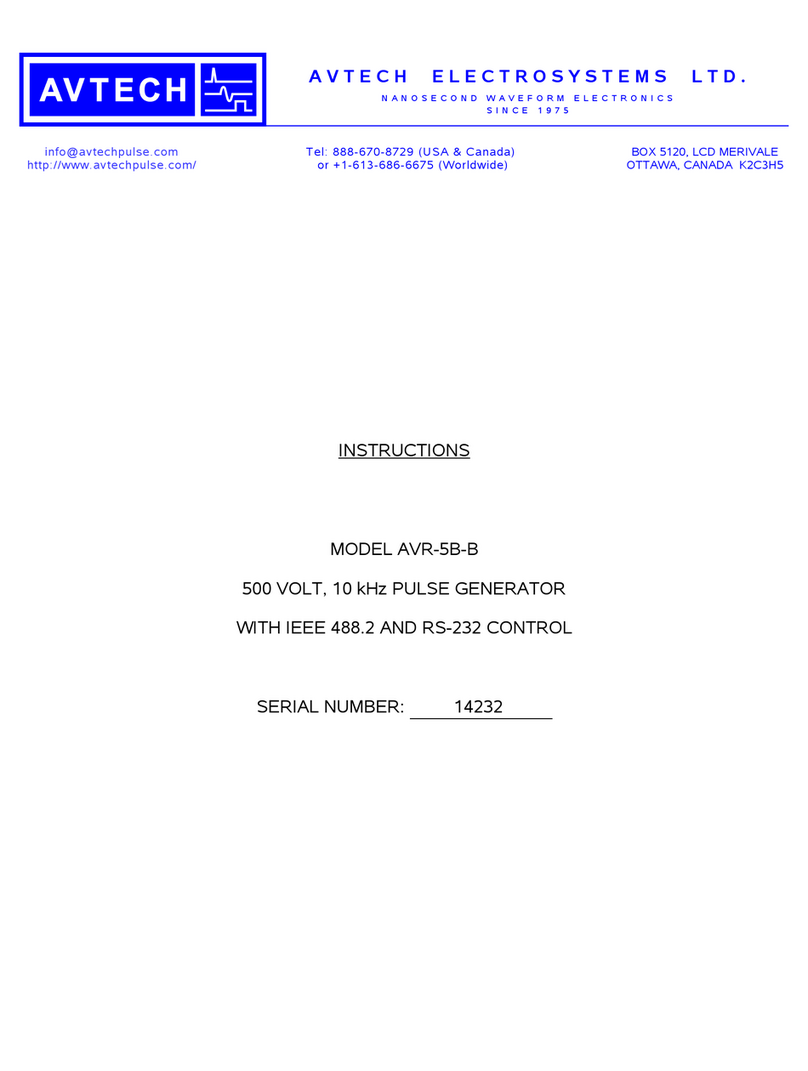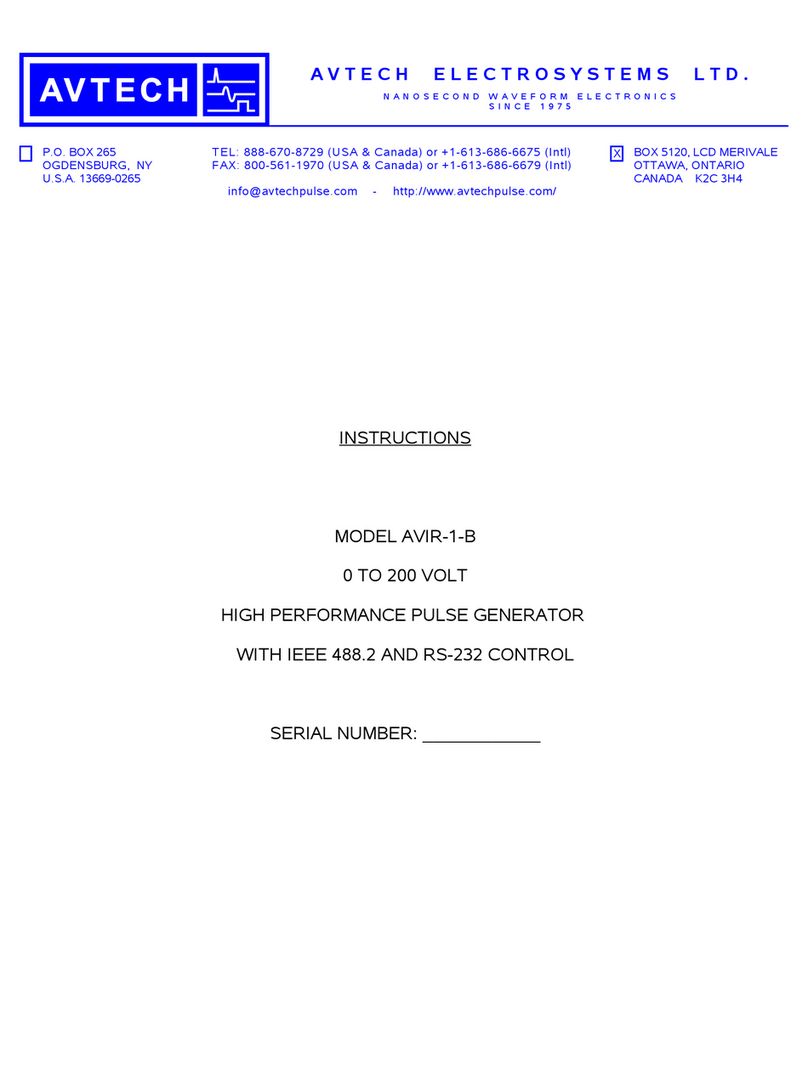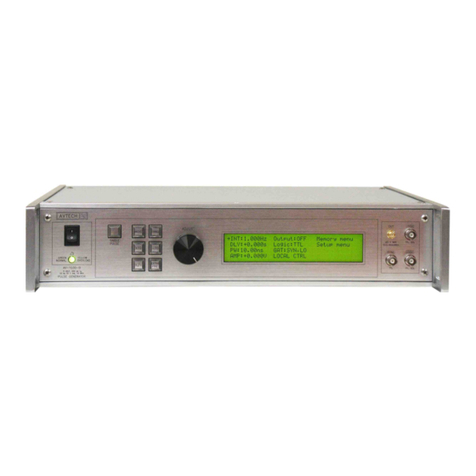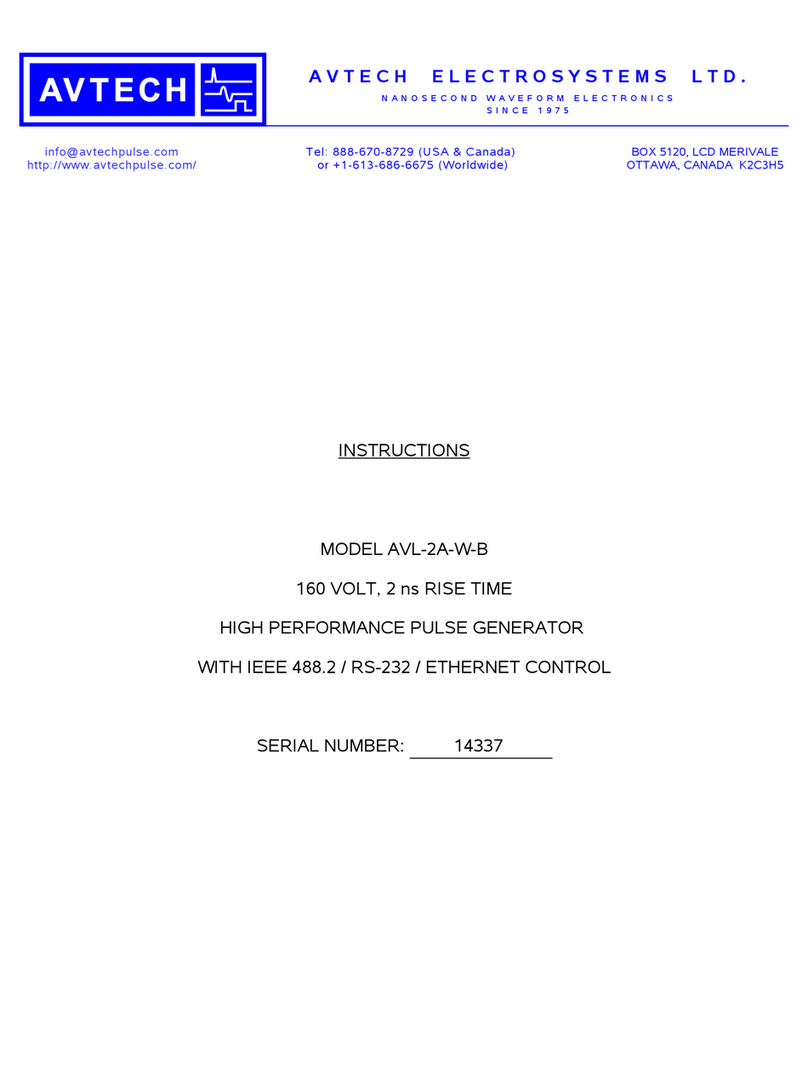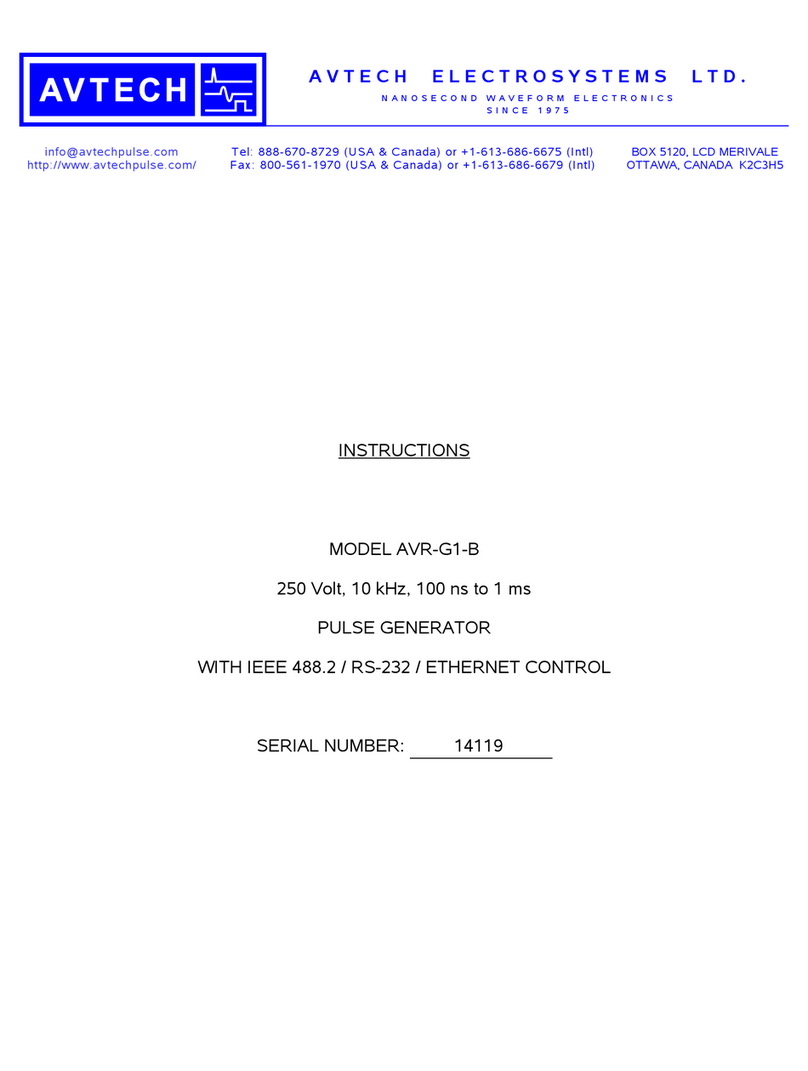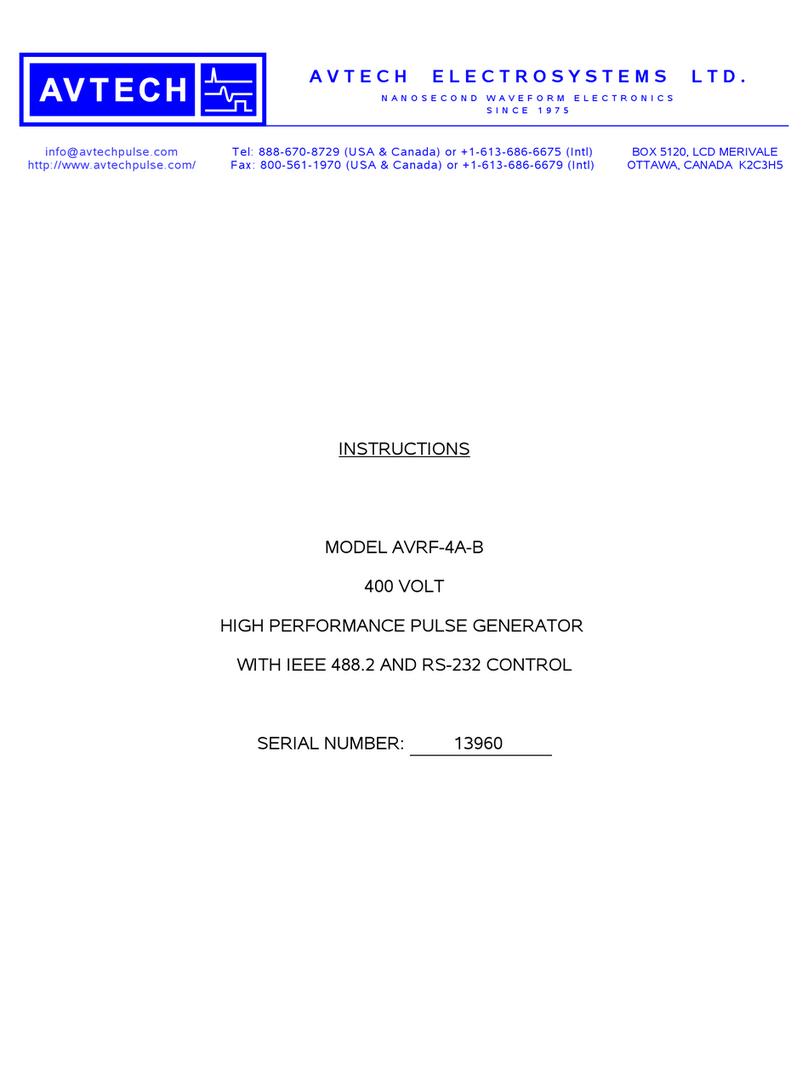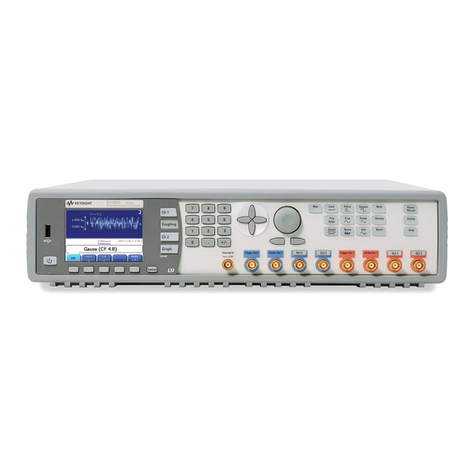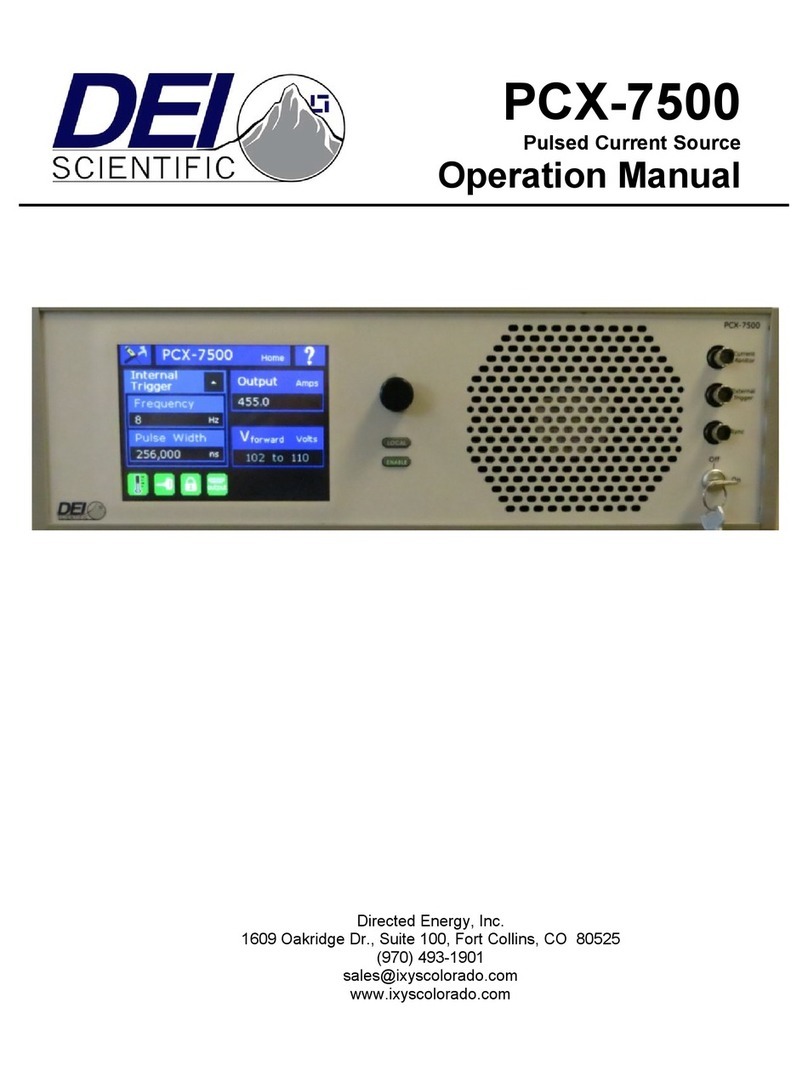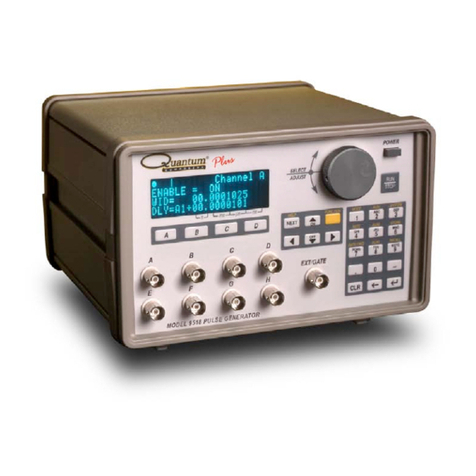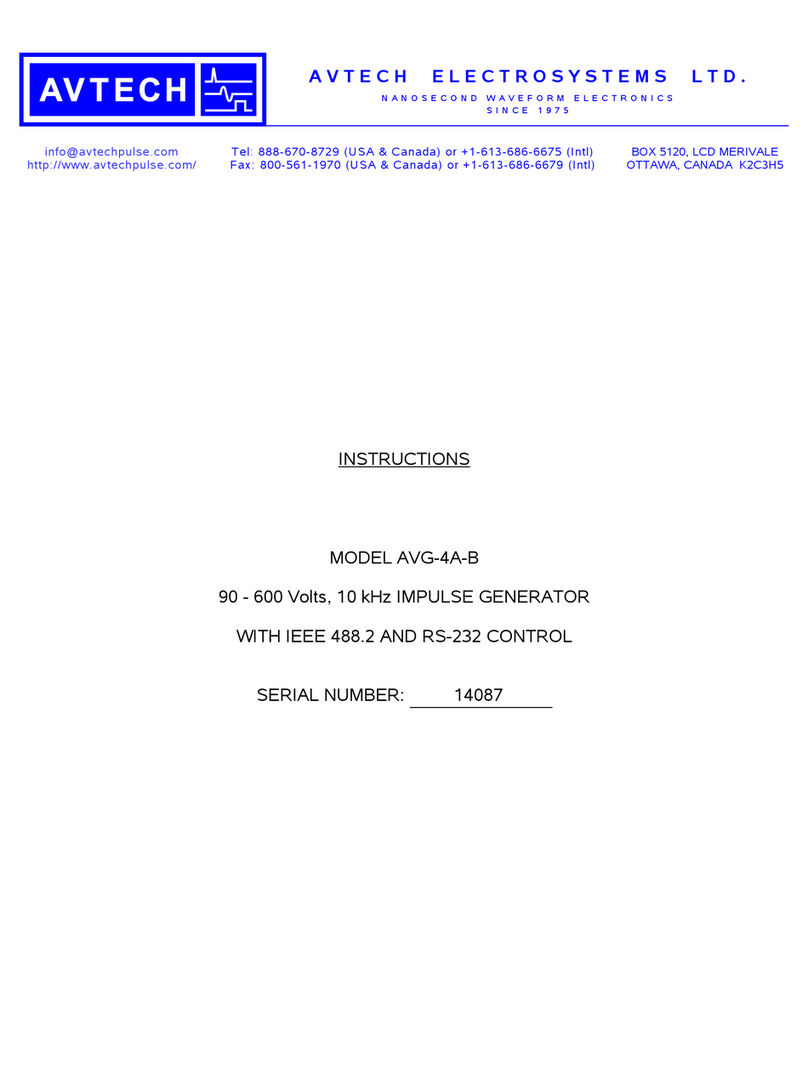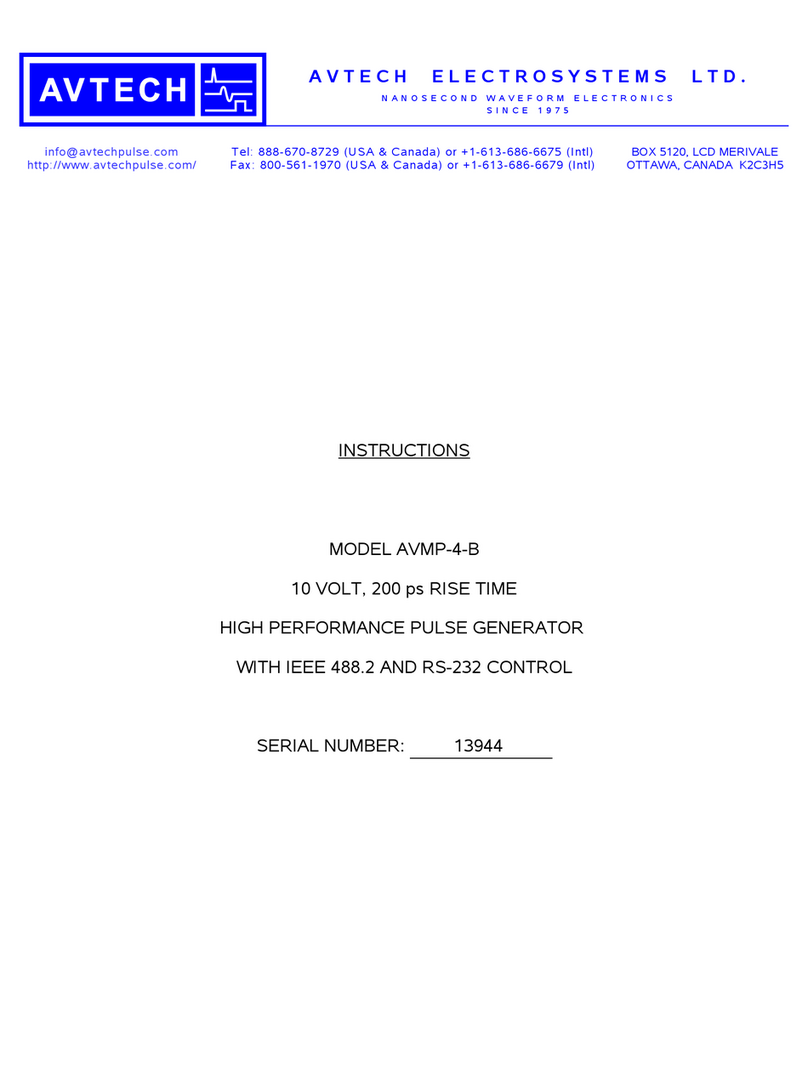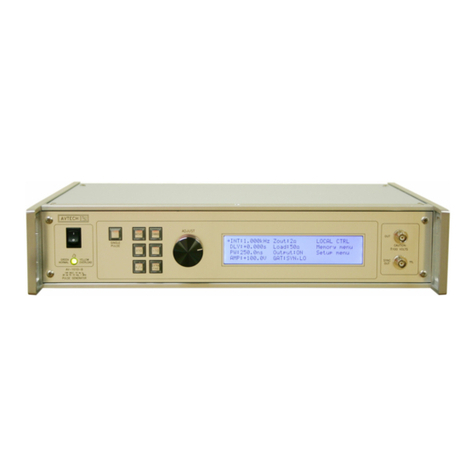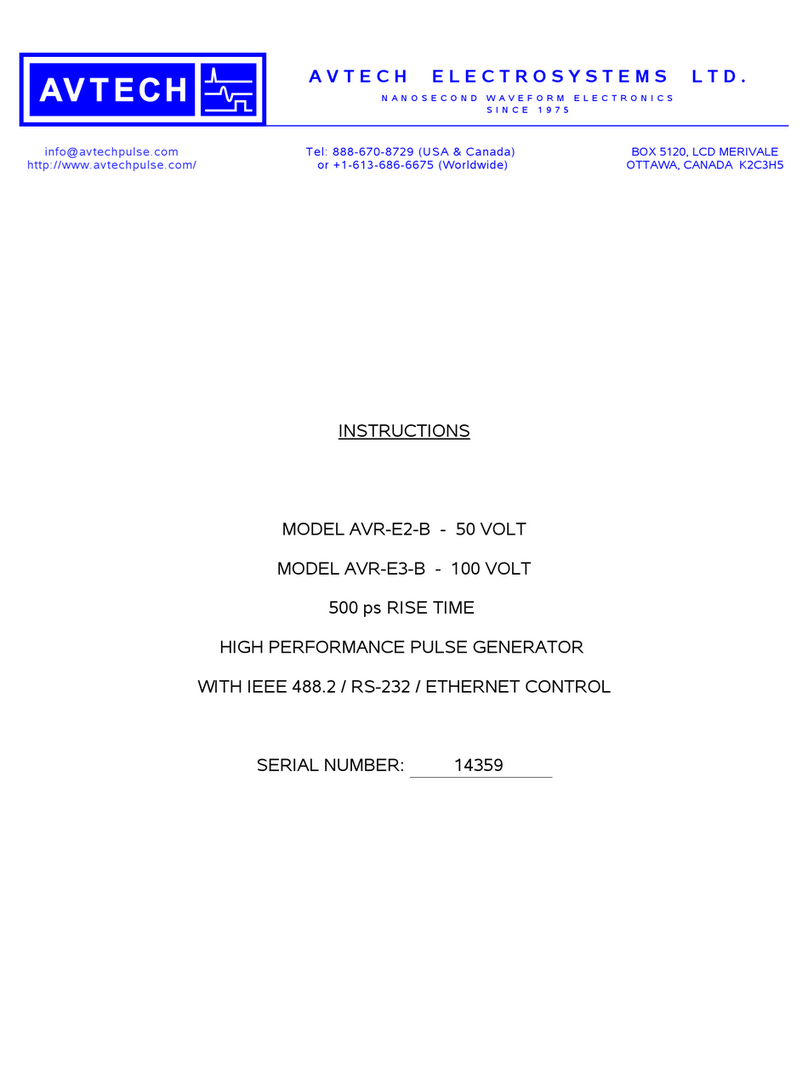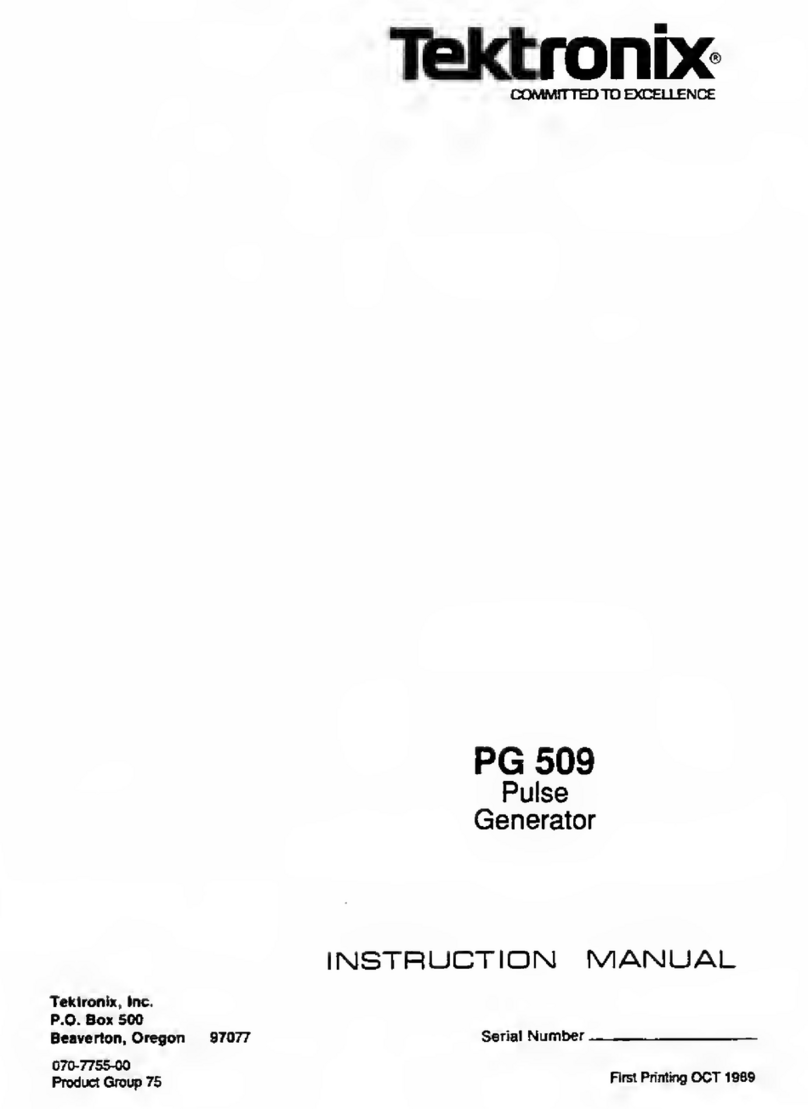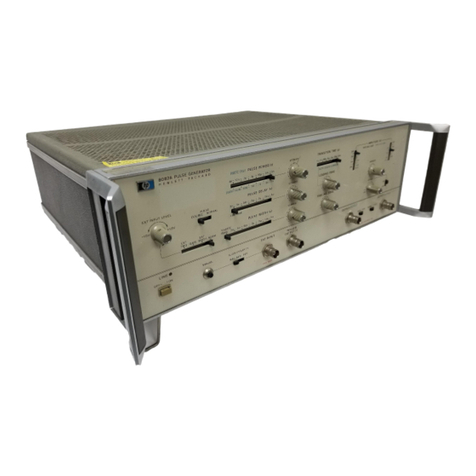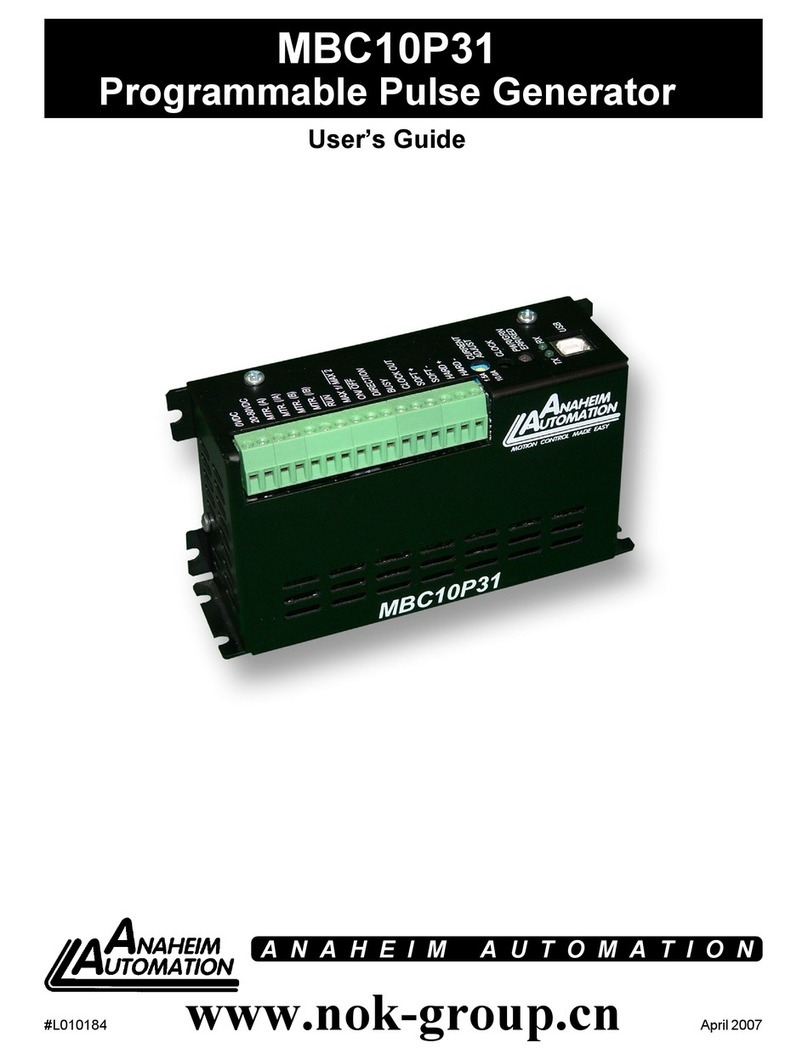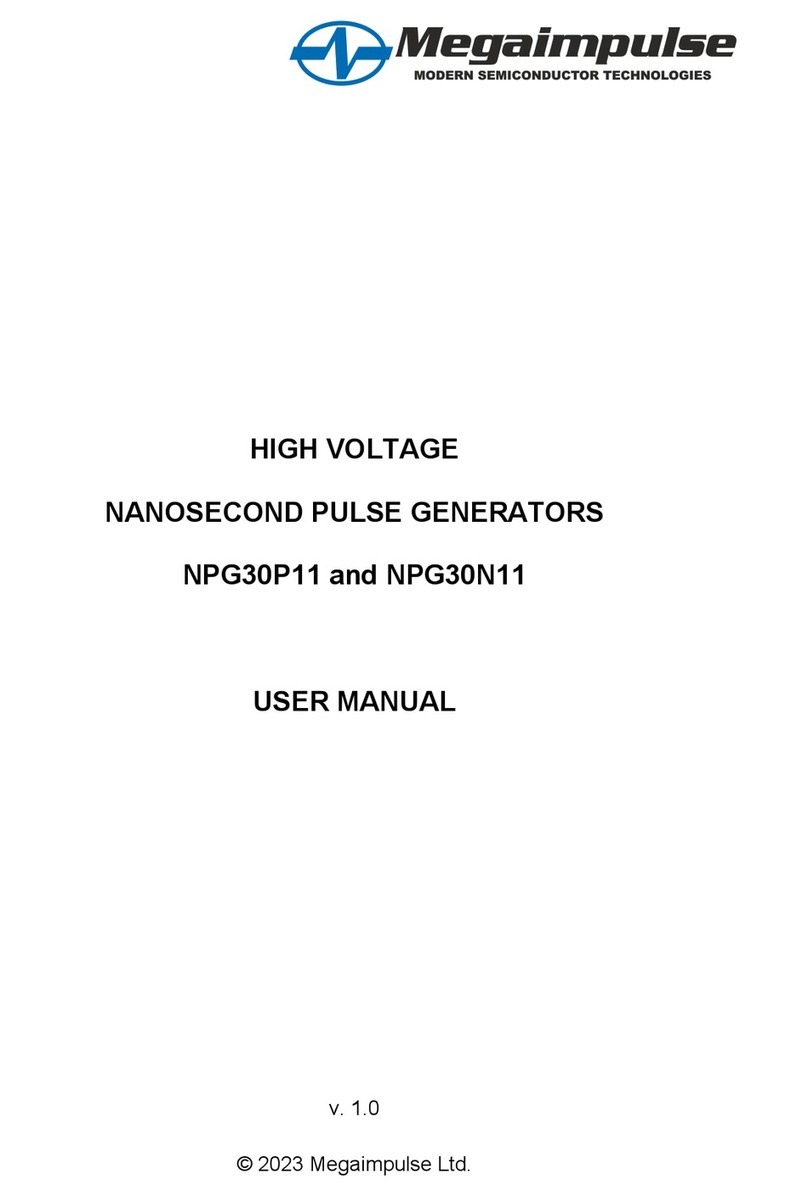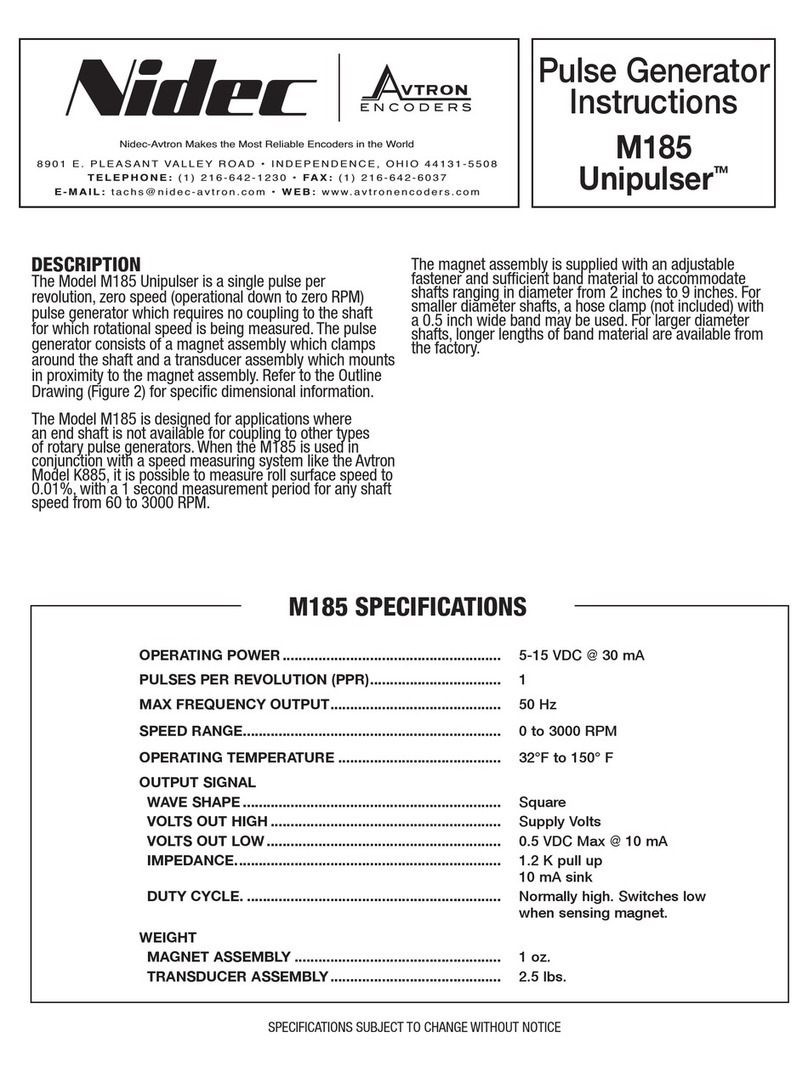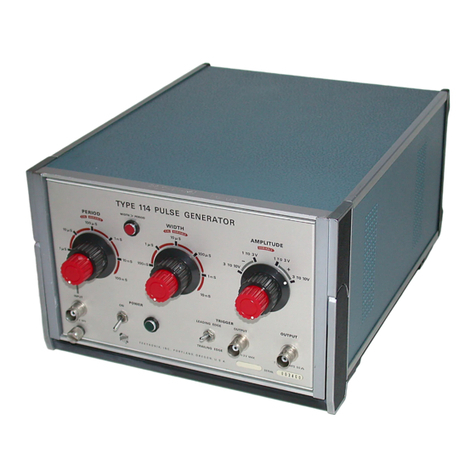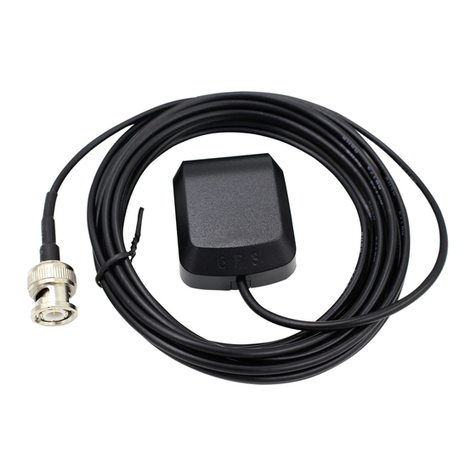SPECIFICATIONS
Model : AVR-3HG-B
Amplitude (into ≥ 50Ω)2,4,7: < 5 to 300V
Maximum output current: 6A
Rise & fall times (20%-80%) into 50Ω: ≤ 2.5 ns
Pulse width (FWHM): 50 ns to 00 us
Maximum PRF: 20 kHz
Max. duty cycle and
average output power
(excludes ZOUT=50Ω
mode on -LV units)
Standard: 0.8%, 6W
-XP option: 3.3%, 00W
-XP2 option: 6.6%, 200W
Max. duty cycle and average output
power6 for ZOUT=50Ω mode on -LV units: 0.277%, 5W
Polarity3: Positive or negative or both (specify).
Dual polarity not available with -XP2 option.
Output Impedance (ZOUT): Standard units: < 2 Ω, approximately (i.e., nominally zero).
With -LV option: <2Ω or 50Ω, switchable7.
Internally-switched output attenuators: Standard units: none.
With -LV option: internal attenuators are automatically switched in when operating in the ZOUT = 50Ω mode.
This permits the generation of amplitudes of < V into 50Ω loads. The maximum average output power
(including power dissipated in ZOUT and the attenuators) is limited to 5 Watts in the ZOUT = 50Ω mode. This
limits the maximum duty cycle, as noted above. (Higher average power ratings and duty cycles in this mode
can be provided at additional cost and with some degradation of the rise and fall times. Contact Avtech with
your special requirements.) The internal attenuators are not used in the ZOUT < 2Ω mode, and the 5W limit
does not apply in that mode.
Propagation delay: ≤ 50 ns (Ext trig in to pulse out)
Jitter: ± 00 ps ± 0.03% of sync delay (Ext trig in to pulse out)
Trigger modes: Internal trigger, external trigger (TTL level pulse, > 0 ns, kΩ input impedance),
front-panel “Single Pulse” pushbutton, or single pulse trigger via computer command.
In the external trigger mode, the pulse width may be set by the instrument,
or it may be set to track the input pulse width.
Variable delay: Sync to main out: 0 to .0 seconds, for all trigger modes (including external trigger).
Sync output: > +3 Volts, > 50 ns, will drive 50 Ohm loads
Gated operation: Synchronous or asynchronous, active high or low, switchable.
Connectors: Out, Trig, Sync, Gate: BNC
GPIB & RS-232 control : Standard feature on all -B units.
LabView drivers: Available for download at http://www.avtechpulse.com/labview.
Ethernet port, for remote control using
VXI- .3, ssh, telnet, & web:
Included. Recommended as a modern alternative to GPIB / RS-232.
See http://www.avtechpulse.com/options/vxi for details.
Settings resolution: The resolution of the timing parameters (pulse width, delay, period) varies, but is always better than 0. 5%
of (|set value| + 20 ns). The amplitude resolution is < 0. % of the maximum amplitude.
Settings accuracy: Typically ± 3% (plus ± V or ± 2 ns) after 0 minute warmup. For high-accuracy applications requiring
traceable calibration, verify the output parameters with a calibrated oscilloscope5.
Power requirements: 00 - 240 Volts, 50 - 60 Hz
Dimensions: 00 mm x 430 mm x 375 mm (3.9” x 7” x 4.8”)
Chassis material: Cast aluminum frame and handles, blue vinyl on aluminum cover plates
Mounting: Any. Add -R5 to the model number to add a rack-mount kit.
Temperature range: +5°C to +40°C
1) -B suffix indicates IEEE-488.2 GPIB and RS-232 control of amplitude and frequency. See http://www.avtechpulse.com/gpib for details.
2) Lower amplitudes are possible with the -LV option, or by adding external attenuators.
3) Indicate desired polarity by suffixing model number with -P or -N (i.e. positive or negative), or -PN for dual polarity option.
4) The instrument may be used to drive resistive loads of less than 50 Ohms, as long as the maximum output current specification is not exceeded. The
rise and fall times may increase.
5) These instruments are provided with a basic calibration checksheet, showing a selection of measured output parameters. These measurements are
performed with equipment that is calibrated on a regular basis by a third-party ISO/IEC 7025:2005 accredited calibration laboratory. However,
Avtech itself does not claim any accreditation. For applications requiring traceable performance, use a calibrated measurement system rather than
relying on the accuracy of the pulse generator settings.
6) Including the power dissipated in ZOUT and internal attenuators.
7) Note that the maximum output voltage falls by a factor of 2 when ZOUT = 50Ω (on units with the -LV option) and the load resistance = 50Ω, due to the
resistor-divider effect.
